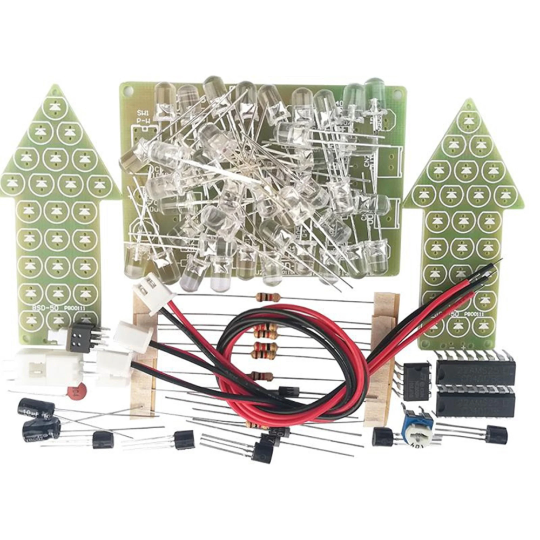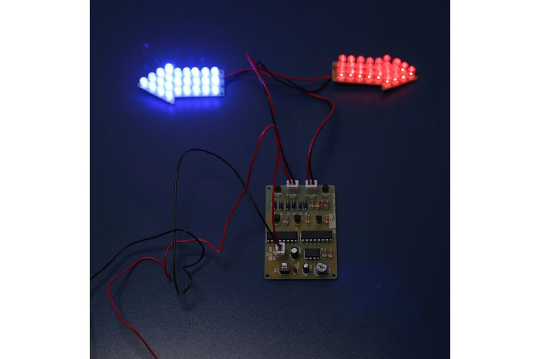Read more
Dual-Color Flashing Light DIY Kit is a flash kit consisting of the circuit board and allows 50pcs LED flash alternately. It can simulate the traffic signal indicator which is very helpful for beginners to understand the circuit principle.
A DIY electronic kit is a package of electrical components used to build an electronic device. Generally, kits are composed of electronic components, a circuit diagram (schematic), assembly instructions, and often a printed circuit board (PCB) or another type of prototyping board.
There are two types of kits. Some build a single device or system. Other types used for education demonstrate a range of circuits. These will include a solderless construction board of some type, such as:
- Components mounted in plastic blocks with side contacts, that are held together in a base, e.g. Denshi blocks
- Springs on cardboard, the springs trap wire leads, or component leads, such as Philips EE electronic experiment kits.[1] These are cheap and flexible options
- Professional type prototyping boards, (breadboards) into which component leads are inserted, following documentation of the "kit".
The first type of kit, those for the construction of a single device, normally uses a PCB on which components are soldered. They normally come with extended documentation describing which component goes where into the PCB.
For advanced hobby projects, sometimes the kit may only consist of a printed circuit board and assembly instructions and the purchaser may have to source all the parts independently; or, the vendor may provide hard-to-get or pre-programmed parts while expecting the purchaser to obtain the rest of the components.
People primarily purchase electronic kits to have fun and learn how things work. They were once popular as a means to reduce the cost of buying goods, but there is usually no cost saving in buying a kit today.
Some electronic kits were assembled to make complete complex devices such as color television sets, oscilloscopes, high-end audio amplifiers, amateur radio equipment, electric organs,[2] and even computers such as the Heathkit H-8, and the LNW-80. Many of the early microprocessor computers were sold as either electronic kits or assembled and tested. Heathkit sold millions of electronic kits during its 45-year history.
Home assembly of common consumer electronics items no longer provides a cost advantage over commercially manufactured and distributed devices. People still build kits for custom devices and special-purpose electronics for professional and educational use, and as a hobby.
Also emerging is a trend to simplify the complexity by providing preprogrammed or modular kits and this is provided by many suppliers online often. The fun and thrill of making your own electronics has shifted in many cases from easy to comprehend applications and analog devices to more sophisticated and digital devices. price/$12


